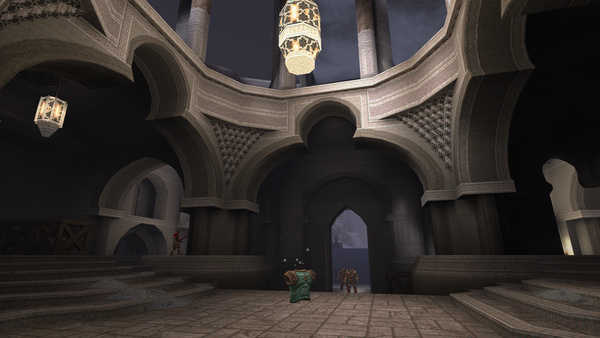
Review: Arcane Dimensions
, Review
I keep playing Quake because I can’t be bothered to install newer games on Linux. Linux, of course, is the best, most amazing platform for developers but it just sucks if you want to use it as a desktop or for gaming.
Old games install easy, and Quake is old.
$ sudo apt install quakespasm
Quakespasm is the engine you want. Don’t use DarkPlaces—DarkPlaces looks slick but it doesn’t work right.
The original Quake campaign gets old quickly, so I was pleased to discover that there’s still an active Quake modding community. Arcane Dimensions is a positively massive mod that makes Quake fun again, with new monsters, levels, and weapons. Think of Arcane Dimensions as the sequel to Quake that you always wanted.
Levels
Levels are the biggest draw. Arcane Dimension’s levels are massive, beautiful, and expertly designed. When I say “massive”, think of each level in Arcane Dimensions as like its own miniature episode.
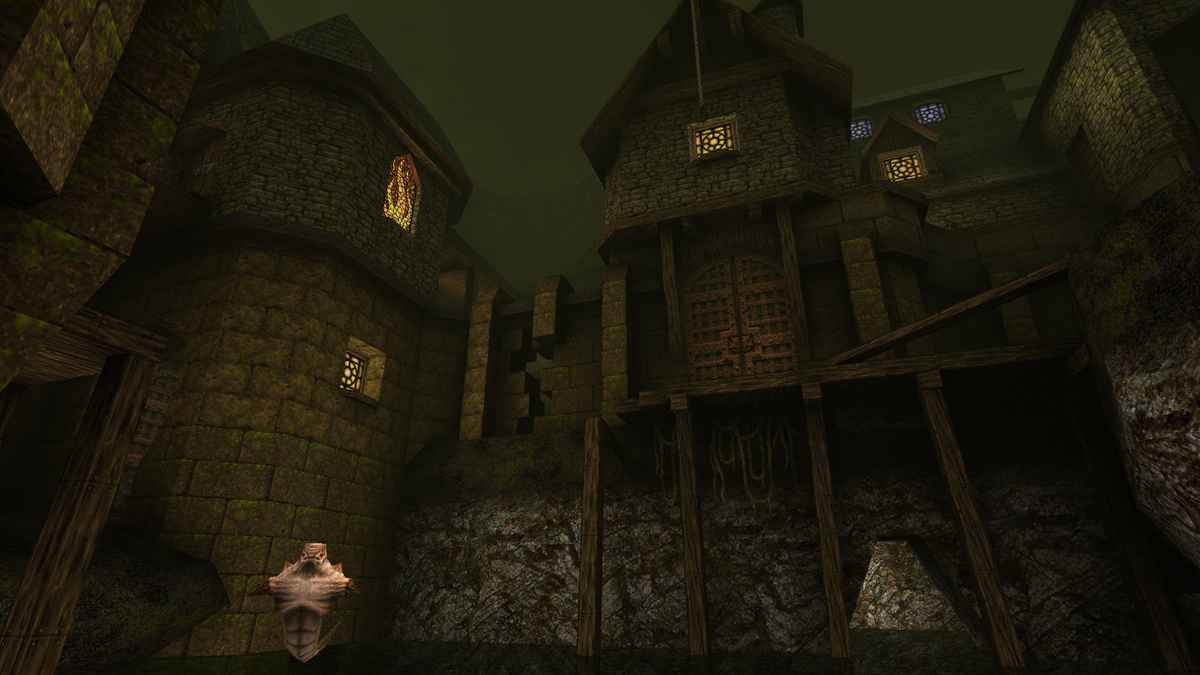
Foggy Bogbottom is one of my favorites, and it’s daunting once you start the level. Press Tab and (on Normal difficulty) you’re greeted with the message:
Kills: 0/418, Secrets: 0/25
What? It has how many monsters?
For comparison, Quake’s Episode 4: The Elder World weighs in at 457 monsters spread across eight levels. Arcane Dimensions isn’t just big, it’s bigger than the whole original Quake campaign.
The Evolution of Level Design
At the beginning of the Foggy Bogbottom, you drop into a swamp and swim across the level, getting a preview of what lies ahead. You wind through the levels above, encountering locked doors, deactivated elevators, and raised bridges blocking your path. Most of these can be opened from the other side—once you fight through a horde of monsters you find yourself back near where you started, just on the other side of a previously locked door.
Spaces are reused to great effect. You’ll backtrack through an area after picking up a key only to find that the area completely transformed—new monsters are breaking down walls and jumping out at you.
This isn’t just more Quake. This is Quake with 25 years of advancements in level design.
You can see the basic concept in classic Quake levels.
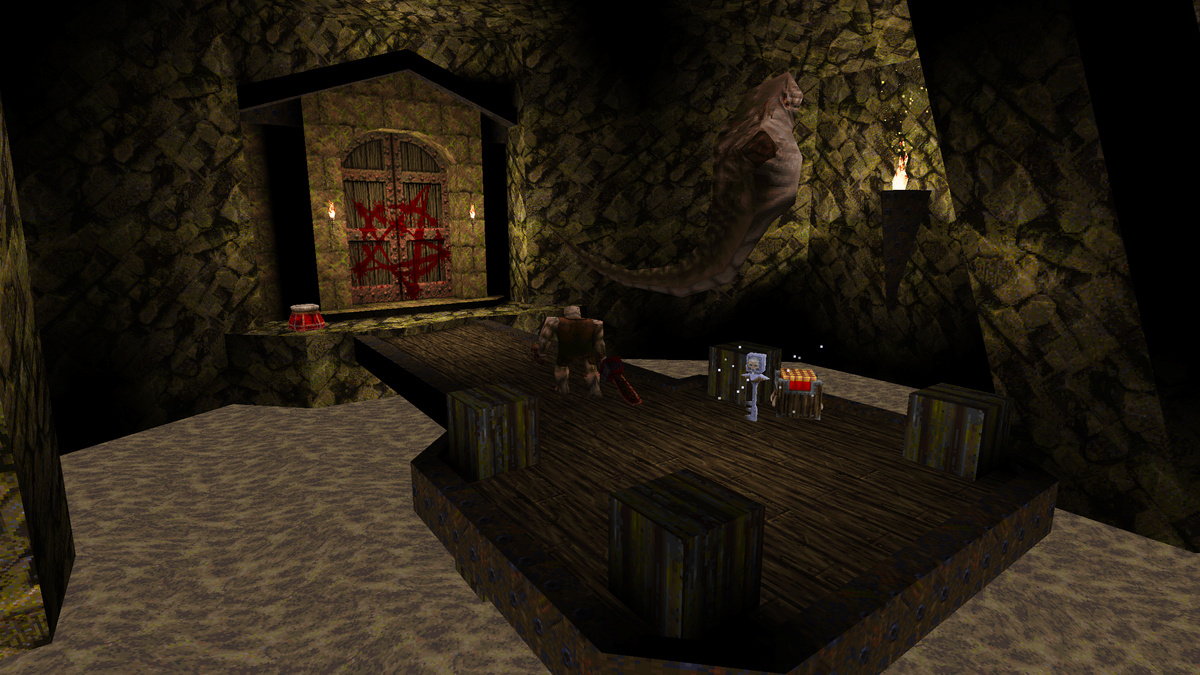
(Quake’s e1m4)
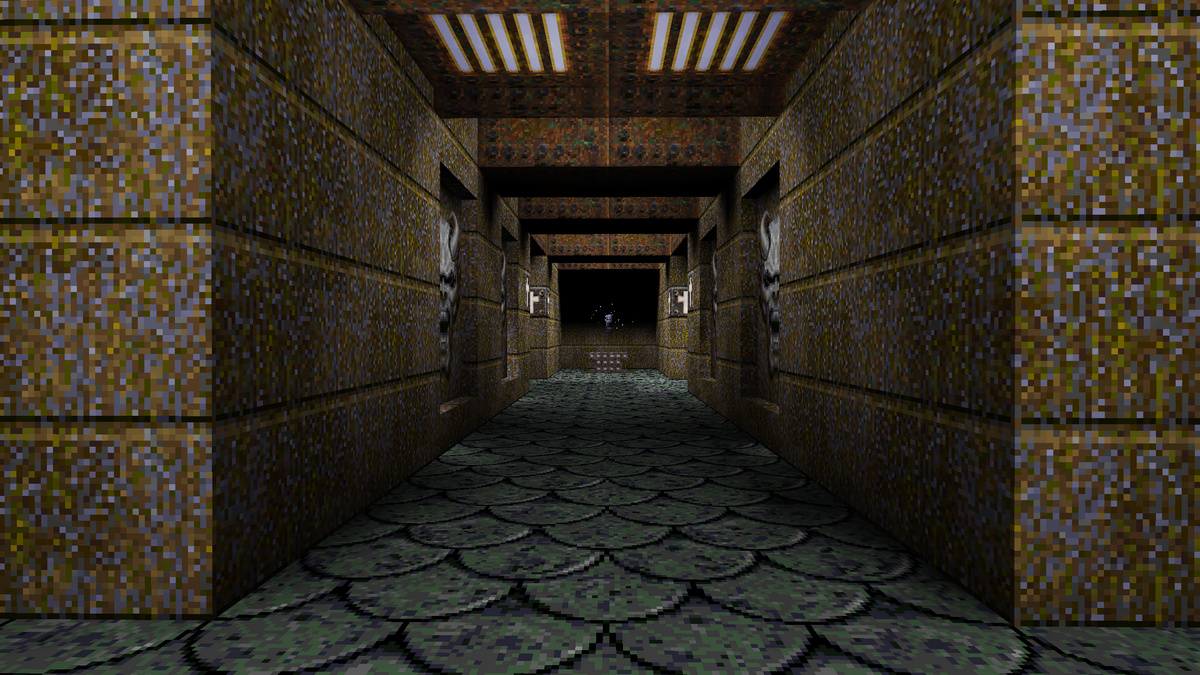
(Quake’s e3m2)
The Grisly Grotto is a classic Quake level, but after getting used to Arcane Dimensions, it just seemed a bit… simple. It’s still a good level. At the beginning, you see the silver key on a platform in the middle of an underground lake. You can’t climb up to the platform, so you dive underneath it, fight ogres and knights, and take an elevator back up. When you make it back to the platform, new monsters teleport in. It’s a formula that works well:
- You see a clear goal (the silver key).
- The goal is inaccessible from your current vantage (by the underground lake).
- You must find another way to the goal (diving underneath the platform).
- When you reach the goal, it triggers a fight.
The Vaults of Zin is similar. You start out with the silver key directly ahead of you and a locked door just to your left, but the key gets whisked underground and you have to follow it down.
Arcane Dimensions gives you more, more, more.
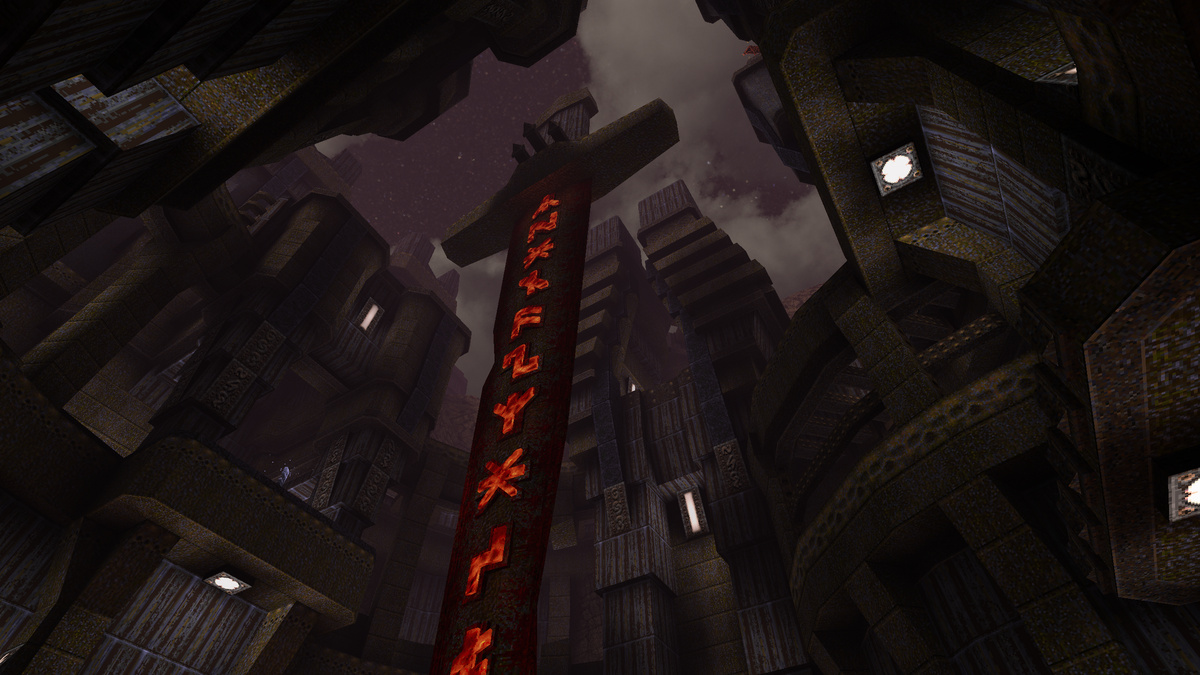
Levels in Arcane Dimensions use the same formula and take take it farther:
- More reuse of space. Instead of just a single key on a platform, you’ll also see other inacessible areas above it, with keys and weapons tucked away on ledges, behind grates, and across chasms.
- Levels that open up. The Grisly Grotto and The Vaults of Zin both push you along one-way paths leading to the silver key. Once you get back to the starting point, the key is as inaccessible as it was before. In Arcane Dimensions, you’ll instead open doors or lower bridges that let you freely and quickly navigate between new and old areas of the level, opening up the level as you progress.
These levels feel less like a sequence of puzzles and obstacles and more like a puzzle that you pick apart one room at a time.
That Rocket Launcher
An easy way to reuse space in Quake is to have the player climb up to higher areas as they move through the level.
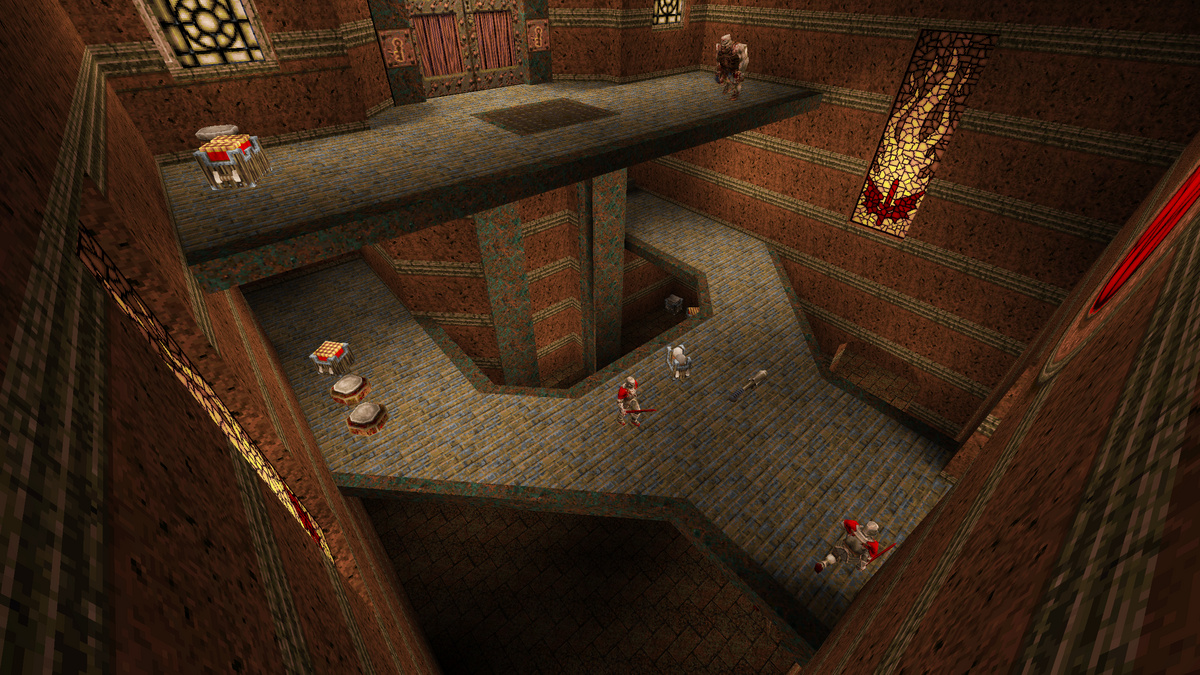
(Quake’s e1m5)
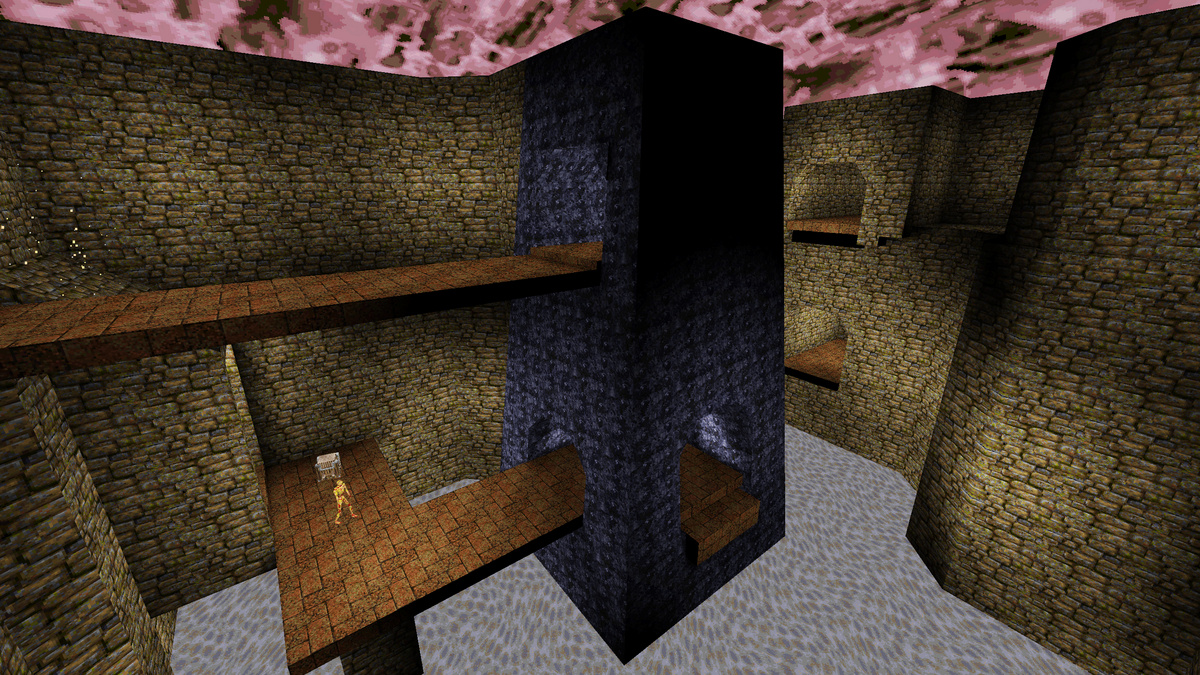
(Quake’s e2m3)
I say “easy”, but the first thing I do in Gloom Keep is grab the rocket launcher and rocket jump to the top of the level. The pathways that lead to the gold and silver key in Gloom Keep are annoying and full of traps, but you can bypass them with one rocket jump each. That rocket launcher in Gloom Keep is just sitting there, below the gold key door, begging you to use it.
Arcane Dimensions levels are downright miserly when it comes to giving you the rocket launcher. Usually the rocket launcher is hidden in a secret, and by the time you get to it, you’ve explored most of the level and there’s nothing left to skip with rocket jumping. And when I say “the rocket launcher is hidden in a secret”, I’m not talking about some button on the ceiling that opens a door. These secrets are a bit more challenging.
Story Elements
A few levels attempt to tell a story.
It might not be much of a story, but you’ll find more story in some Arcane Dimensions levels than just “kill monsters, get rune.” Firetop Mountain is the first one I played with a story and to be honest, it was such a surprise to see any story at all.
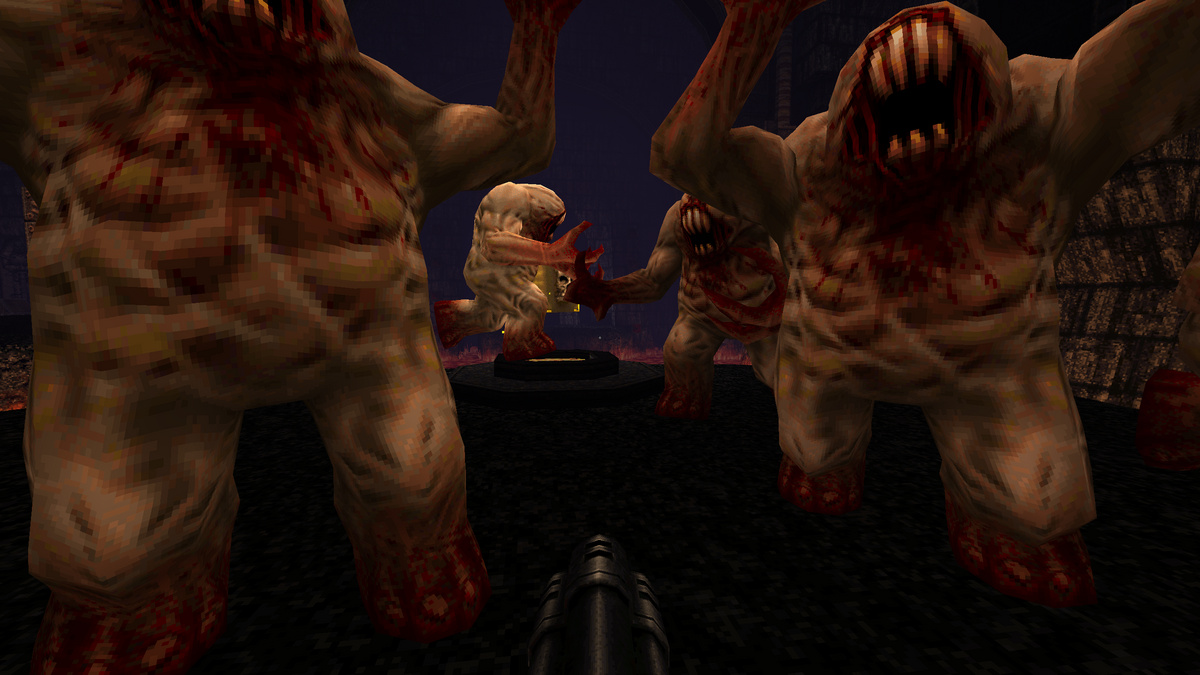
I’m not going to spoil Firetop Mountain, but I will say that if you haven’t seen the knight and read the books, you haven’t really beaten the level. It’s completely optional! After all, this isn’t modern-style game storytelling with cutscenes, but it’s also more than just scattered pieces of text that you put together.
New Monsters and Boss Fights
Arcane Dimensions comes with a slew of new monsters to fight. I don’t know how many. A lot.
Some of these are simple takes on existing monsters. You’ll see variant knights, variant ogres with sledgehammers that slam the ground, or grunts with rocket launchers or flamethrowers. There are also plenty of brand new monsters—I think some of the designs are taken from existing Quake mods, so they’re not all “new” per se. There’s enough variety to fill out the levels and make it feel like you’re not fighting the same ogres, death knights, and scrags over and over again.
The coolest new monsters are the bosses. Quake never really had proper boss fights. Episode 1 had Chthon, but that was just a small set piece battle with a couple buttons to press while you dodge fireballs. The final level had Shub Niggurath, but you were mostly fighting vores and shamblers. All you had to do to kill Shub Niggurath was step through a portal at the right moment. The bosses in Quake were a bit of a let down.
Arcane Dimensions adds a few real juicy boss fights and even gives you better version of the Chthon fight from e1m7. One of the more common boss fights is against massive statues that stomp on the ground and destroy the level as you fight them, like in The Realm of Enceladus.
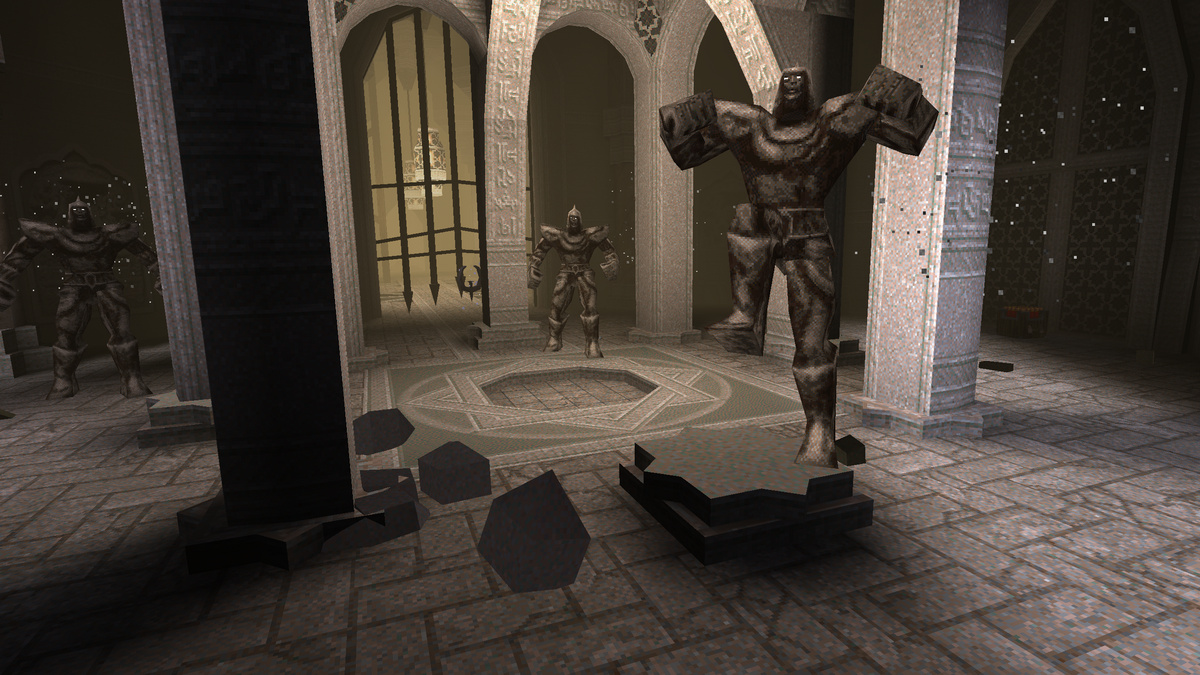
Miscellaneous Gameplay Changes
With all these additions, there are also a couple tweaks here and there to alter existing Quake gameplay.
These aren’t major and you might not notice them at first. For one thing, the shotgun is no longer a hitscan weapon! Shotgun shots take time to travel through the air and you have to lead your target, if only a little bit.
Beautiful Environments
It’s 25 years since Quake came out. Computers are faster and open-source developers have made a few improvements to the engine. Just take a look at one of Arcane Dimensions’ latest levels, Tears of the False God. It doesn’t look like a Quake level.
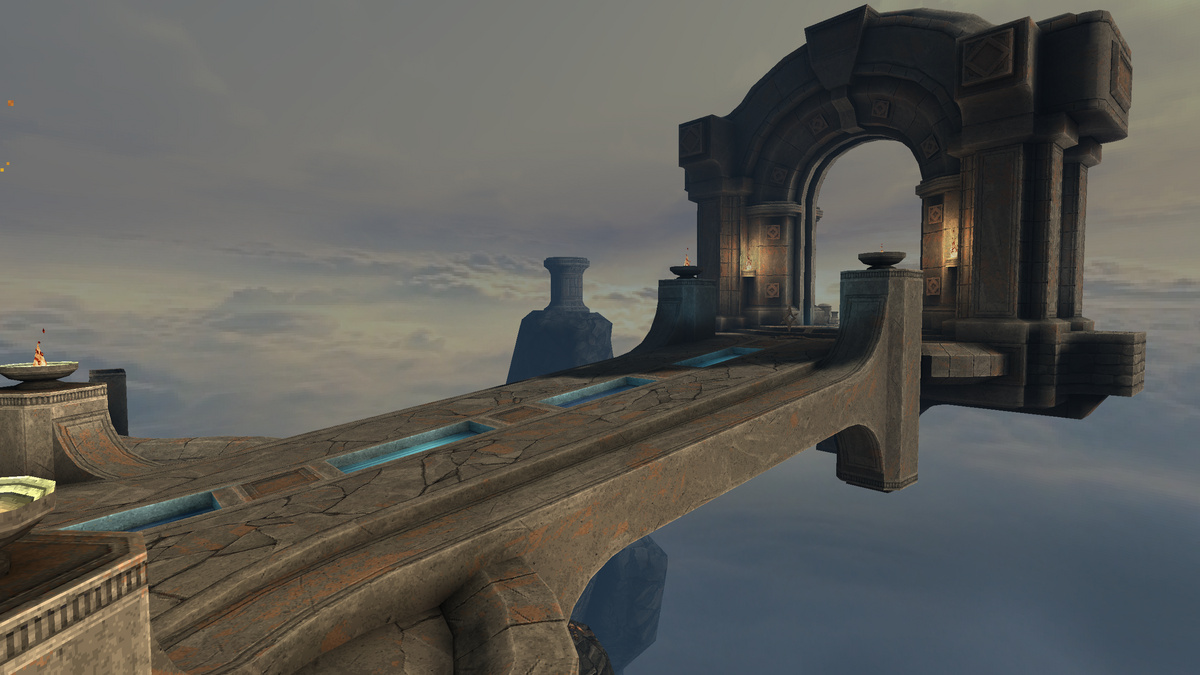
One minor problem you might run into is that the complicated, beautiful level geometry sometimes gets in the way. It’s not much, but occasionally there’s some geometric detail that makes it harder to make a jump, or the rounded top of a cliff may make it hard to judge where you can stand.
Summary
Play it. 100% recommended. Quake, but better.
Don’t forget to explore the second starting hub, marked “hub for more maps”.
Also note that there are four levels accessible from the start hub that have runes. The doorways that lead to these levels are marked with the relevant rune, if you look closely. The runes themselves make take some work to find.